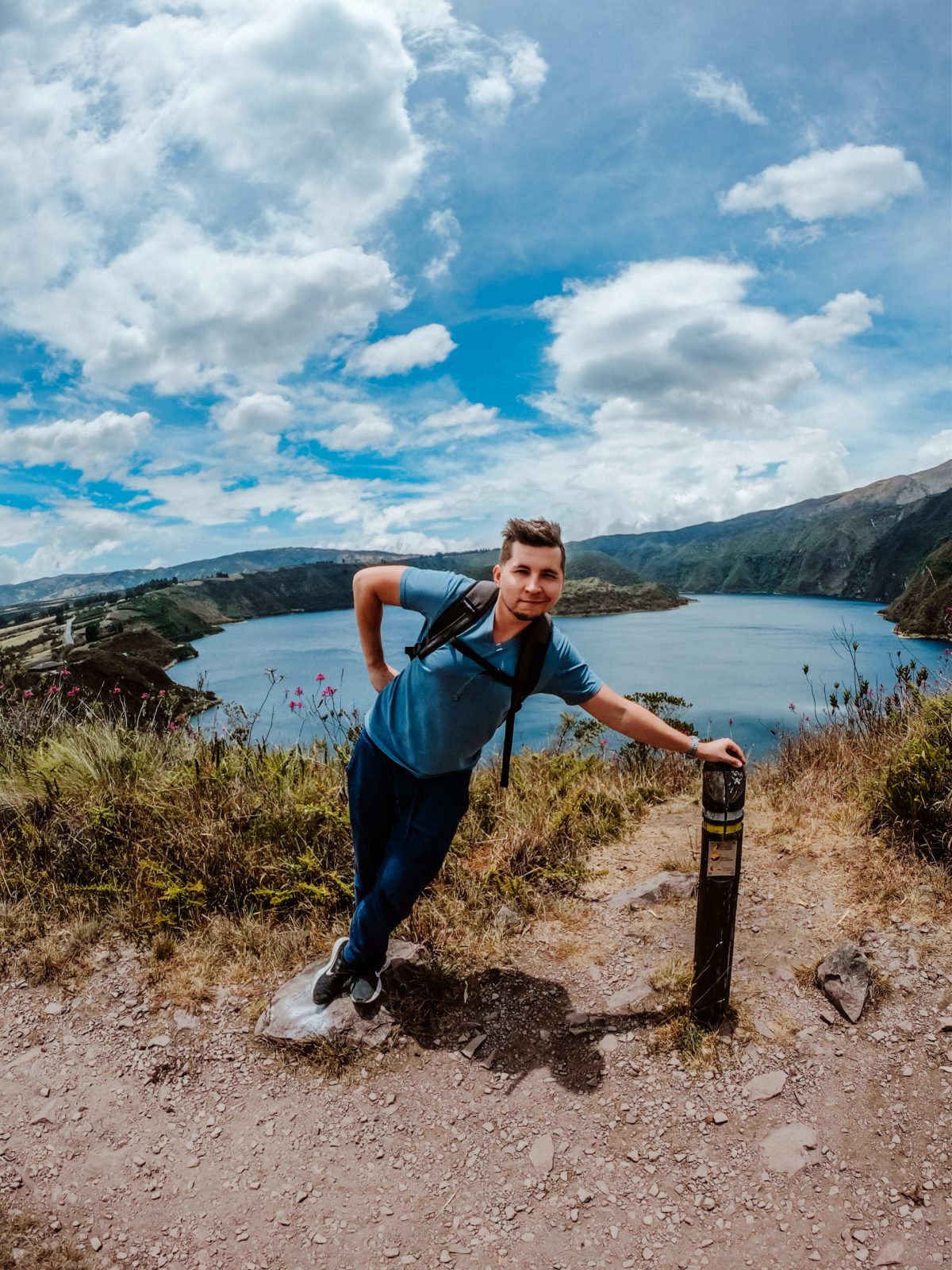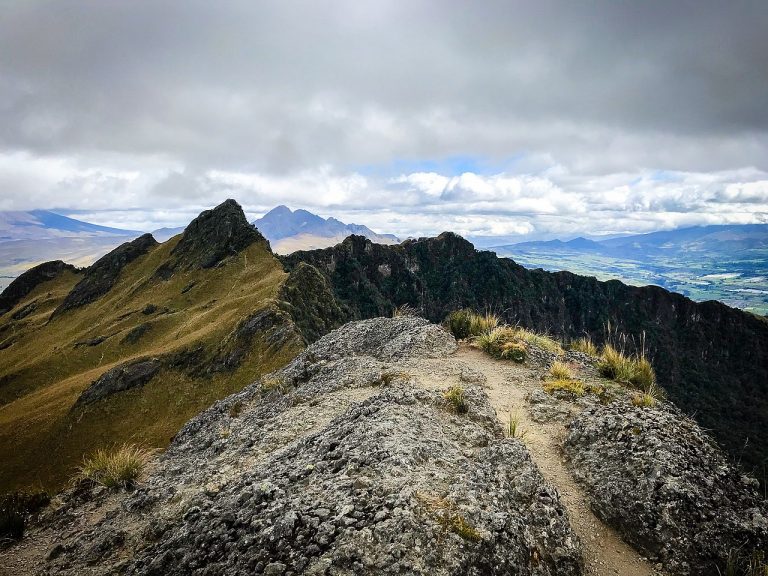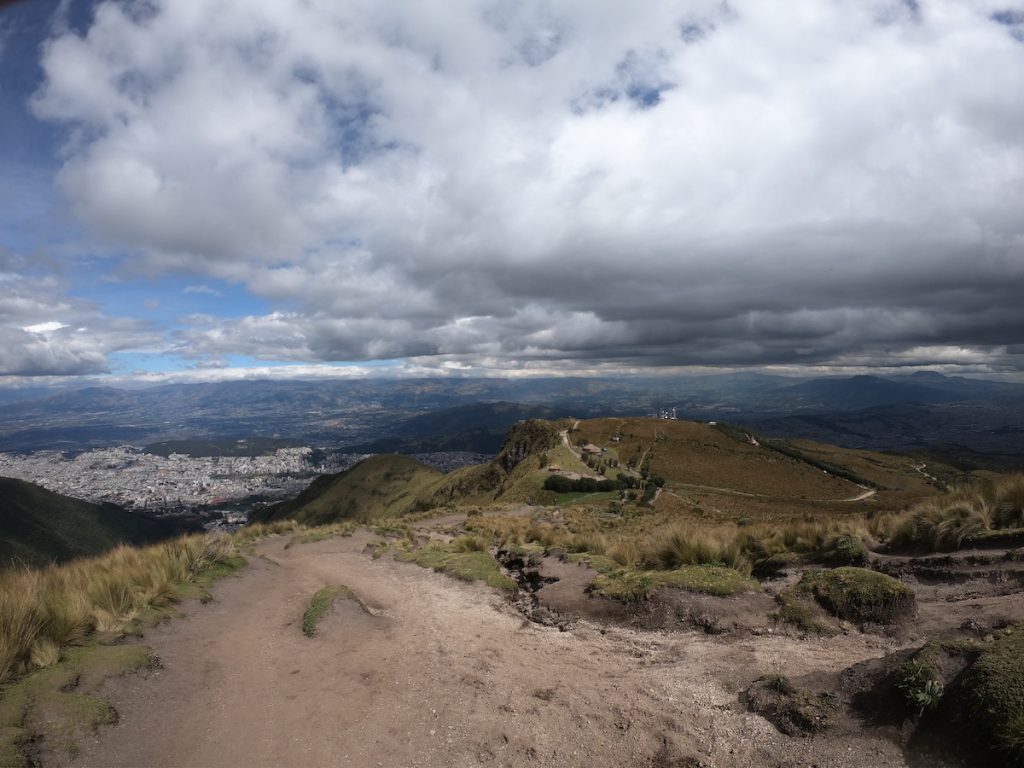Pasochoa is a long-dormant volcano, eroded over centuries and inactive since the last ice age. Located just 30 kilometers south of Quito, it’s an easily accessible destination for those looking to explore the Andean highlands.
The highlight of the Pasochoa climb is its humid cloud forest, nestled within the extinct volcanic crater. This lush area is home to over 100 species of birds and around 50 varieties of native Andean plants, making it a paradise for nature enthusiasts.
The hike itself is relatively easy, winding through beautiful páramo grasslands and dense cloud forests. Along the way, you might encounter Andean wildlife, including bulls, horses, hummingbirds, the vibrant Mountain-Tanager, the striking Red-crested Cotinga, and, if you’re lucky, a rare sighting of the Andean Condor.
What makes this trek even more special are the panoramic views of the surrounding volcanoes, with the mighty Cotopaxi standing out in the distance. For those new to high altitudes or beginning an acclimatization process, Pasochoa is the perfect starting point. I’d also recommend taking ChlorOxygen 1-2 weeks before the trip to help ease the adjustment to higher elevations.
Looking back, hiking Pasochoa required more preparation than expected – from choosing the right transportation to timing our climb for the best weather conditions. Skip the uncertainty I faced and get a FREE personalized Ecuador hiking quote from my trusted local experts who know exactly how to prepare you for this lesser-known trek. Your booking helps support both this blog and local Ecuadorian communities.
Table of Contents
Plan perfect trip to Ecuador & Galapagos
I spent countless hours researching everything about traveling to Ecuador, and I created this blog for fellow travel enthusiasts who want the best, most reliable information. But if you want to save time, we’ve partnered with the top local agency to plan your dream trip.
How to Get to Pasochoa Volcano
By Car
To reach Pasochoa, drive about 25 to 30 kilometers south of Quito, passing through the town of Sangolquí. This is the last stop for any supplies you might need. After Sangolquí, keep an eye out for a modern gas station; shortly after passing it, take a left turn off the main road onto an unmarked path. Follow the gravel and stone road until it ends at an old, abandoned building. From here, you’ll find a trail that leads to the summit of Pasochoa.
Be aware that the last stretch of this road is quite rough and can only be navigated with a 4×4 vehicle. It’s definitely worth planning ahead if you’re renting a car or arranging transportation.
By Bus
Pasochoa can also be reached via the town of Amaguaña. To get there, you can take a bus from Quito’s La Marín terminal. The bus ride is quite affordable, costing just 45 cents and taking about an hour. Once you arrive in Amaguaña, it’s just a short walk to the town plaza where you can rent a pickup truck to take you directly to the trailhead. The ride usually costs around $10, making it a budget-friendly way to access the climb.
Climbing Pasochoa
After making a right turn at the old structure, you’ll encounter two modern wire fences with gates. It’s perfectly fine to open these gates to pass through, but be sure to leave them exactly as you found them. Keep an eye out for any bulls among the grazing animals in the area, as they can sometimes get curious!
The initial part of the hike wasn’t particularly steep, but at an altitude of 3,200 meters, even moderate physical activity can give your heart and lungs a good workout. As we emerged from a dense little forest, squeezing through narrow sections, we were greeted by a group of cows. They weren’t exactly friendly and seemed determined to block our path, even trotting toward us to make sure we didn’t pass easily!
Once you’re through the second gate, take a left turn toward the clear canal or ditch that runs just below the ridge, leading up to the summit.
As we climbed higher, the weather didn’t improve, but at least it wasn’t raining—yet. Even with fog constantly drifting across the landscape, we finally caught a glimpse of the Pasochoa summit. It was a thrilling moment to see the classic ridgeline of the volcano crater emerge through the mist.
I can only imagine how breathtaking the view would be on a clear day—a dramatic volcanic crater with expansive views of even taller surrounding peaks. But there was something hauntingly beautiful about seeing the crater shrouded in thick fog. The eerie, almost mystical atmosphere made the entire climb feel like stepping into another world. Even with the limited visibility, the experience was absolutely worth it.
We paused for a quick lunch at the summit, at 4,200 meters, as the fog enveloped us completely. On the way down, the rain finally started, turning the already slippery mud trail into a real challenge.
The only way to avoid slipping and falling was to grab handfuls of the resilient páramo grass to anchor yourself with each step. Thankfully, the páramo grass isn’t sharp like blade grass, but it was constantly damp from the rain. Our hands quickly went numb from the cold, and our clothes became so soaked that we couldn’t possibly get any colder or wetter. Despite the discomfort, it was an adventure that truly tested our resilience and left us with unforgettable memories.
Trust me, while Pasochoa might not be Ecuador’s most famous peak, it’s perfect for altitude acclimatization before tackling bigger climbs! Want a well-planned hiking itinerary that builds up your mountain experience safely? Get a FREE expert quote from my recommended local agency who can help create your perfect climbing progression. Your booking supports this blog and local Ecuadorian businesses.
When to Climb
Pasochoa is accessible year-round, making it a great hiking destination no matter the season. However, the best time to visit is during the drier months of December and January, when the weather is more predictable. If you prefer cooler temperatures, June and July are ideal, offering clear skies and refreshing conditions that enhance the trekking experience. Each season has its own charm, but these months tend to provide the most favorable hiking conditions for enjoying the beautiful landscapes of Pasochoa.
Mountain Conditions
Climbing Pasochoa doesn’t require any specialized mountaineering gear, making it an accessible trek for most hikers. The trail is straightforward and well-marked, thanks to frequent use. The hike begins with a path through tall grass and gradually transitions to loose granite as you gain elevation.
Both the true summit and the false summit offer clear views of the route, making navigation easy even for those new to high-altitude hikes. The ascent is rewarding without being overly technical, allowing you to fully enjoy the stunning views and diverse landscapes Pasochoa has to offer.

Planning trip to Ecuador?
My wife and I rented a car for 15 days and traveled from the northern part of Ecuador to the south, visiting amazing cities like Quito, Otavalo, Baños, Cuenca, and Guayaquil. Along the way, we explored iconic places such as Cotopaxi National Park, Quilotoa Lake, and many more breathtaking destinations.
Not many blogs cover traveling in Ecuador in detail, so I spent nearly three weeks creating this comprehensive Ecuador travel guide based on our trip. It’s packed with everything you need to know, and honestly, I consider it the best free travel guide about Ecuador out there.
If you’re planning a trip to Ecuador, don’t forget to use my link for discounted hotel prices through Booking.com. It’s a great way to support my blog while saving money on your accommodations!
Bottom Line
The day hike to Pasochoa Volcano is a wonderful experience for hikers of all skill levels. One of the best things about this trail is that it isn’t overly popular with tourists, so you won’t have to worry about crowds. It’s a perfect spot to take your time, enjoy the peaceful surroundings, and really connect with nature.
While I wouldn’t necessarily call it a must-visit in Ecuador, it’s definitely a great option for hiking enthusiasts looking for something off the beaten path. If the idea of a day trek up Pasochoa appeals to you, there are several travel companies that offer guided climbing trips, making it easy to arrange.
Plan perfect trip to Ecuador & Galapagos
I spent countless hours researching everything about traveling to Ecuador, and I created this blog for fellow travel enthusiasts who want the best, most reliable information. But if you want to save time, we’ve partnered with the top local agency to plan your dream trip.




HI Oleg,
Thank you for such an informative article. I am trying to arrange a trip to Ecuador for a few of my hiking buddies in September this year. Do you have any hiking guides or a company that you would recommend? I want to hike Rucu Pichincha, Ruminahui, Pasochoa and Cotopaxi.